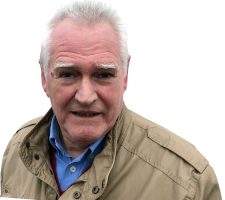search
date/time
 | Yorkshire Times A Voice of the Free Press |

Mike Tilling
Arts Correspondent
3:00 AM 28th November 2022
arts
David Lascelles In Conversation With Dorcas Taylor
Telling the Truth – The Lascelles, The West Indies, Harewood
David Lascelles in conversation with Dorcas Taylor
Scarborough Art Gallery
David Lascelles in conversation with Dorcas Taylor
Scarborough Art Gallery

Harewood House. Photo by Rachel Penney on Unsplash
David Lascelles is very far from such a position, despite a family history of exploitation and slave ownership. Indeed, Harewood House, just outside Leeds, was built in 1771on the profits made from plantations in The West Indies worked by slaves abducted from Africa. Discussing this history made for an enlightening evening that was uncomfortable for us, however, it must have been doubly so for him.

David Lascellles
The Telling the Truth event was part of the Scarborough Art Gallery’s From Local to Global exposition that seeks to locate Scarborough’s place in the British colonial experience. Curator of the display, Dorcas Taylor, questioned Lascelles about his family’s involvement and his attempts to disinter the truth.
‘Disinter’ because many of the documents, relating to the period of slavery, have been found locked away in the cellars of Harewood House. Lascelles commented ‘now is the time to make the documents available’.
A slide show presentation charted both the Lascelles family’s engagement with slave exploitation and a general history of the changing attitudes at home. Many people know that Parliament abolished slavery in the British Empire in 1807, but it took another twenty five years before the Slave Trade was abolished. As one West Indian politician put it: ‘It’s almost as though the British invented the slave trade so they could claim credit for abolishing it!’
The final part of the evening was questions from the audience – and there were plenty of them. It was probably here that an answer to the issue, ‘What can be done now?’ began to emerge. Lascelles advised against the grand gesture - ‘Do a little, a lot’. He also suggested the ‘little’ should be something joyful, not ‘self lacerating’.
What emerged from Lascelles’ address was the plural nature of history. We need to go beyond the unifocal vision of Our Island Story and pay attention to other points of view.
David Lascelles helped us take a step along that path